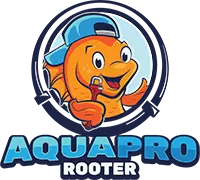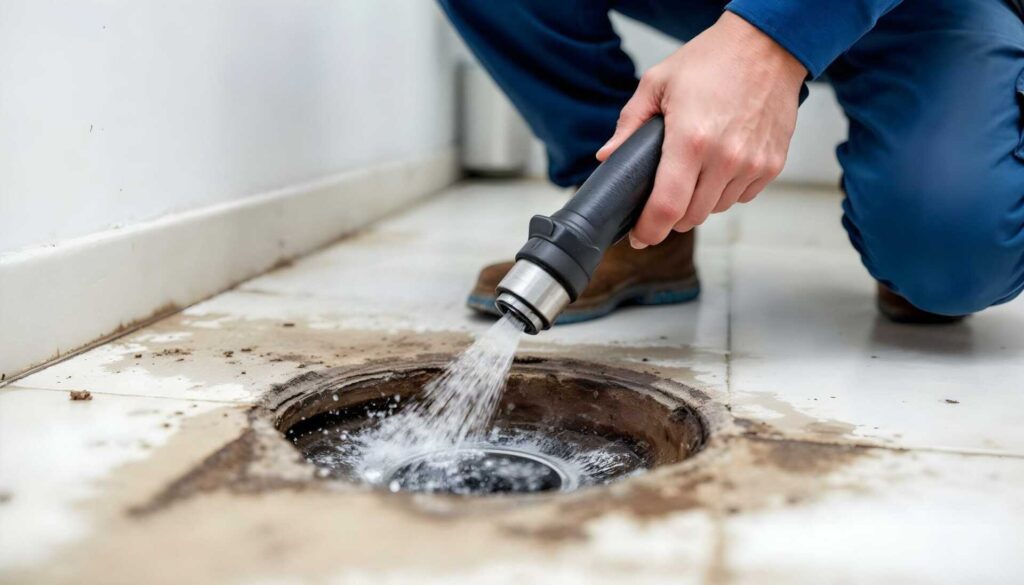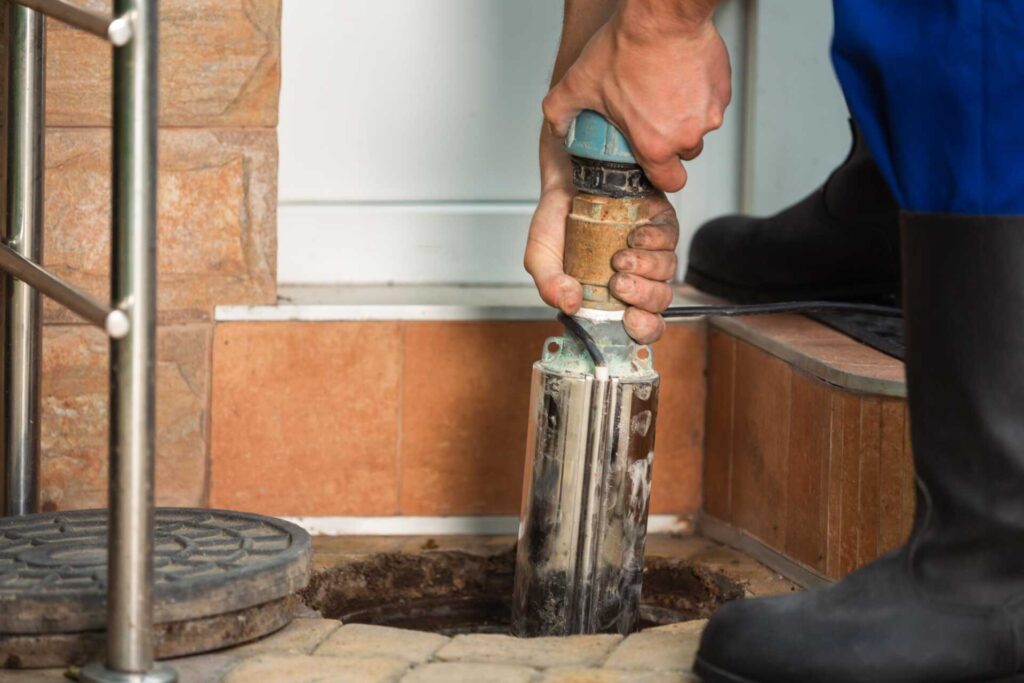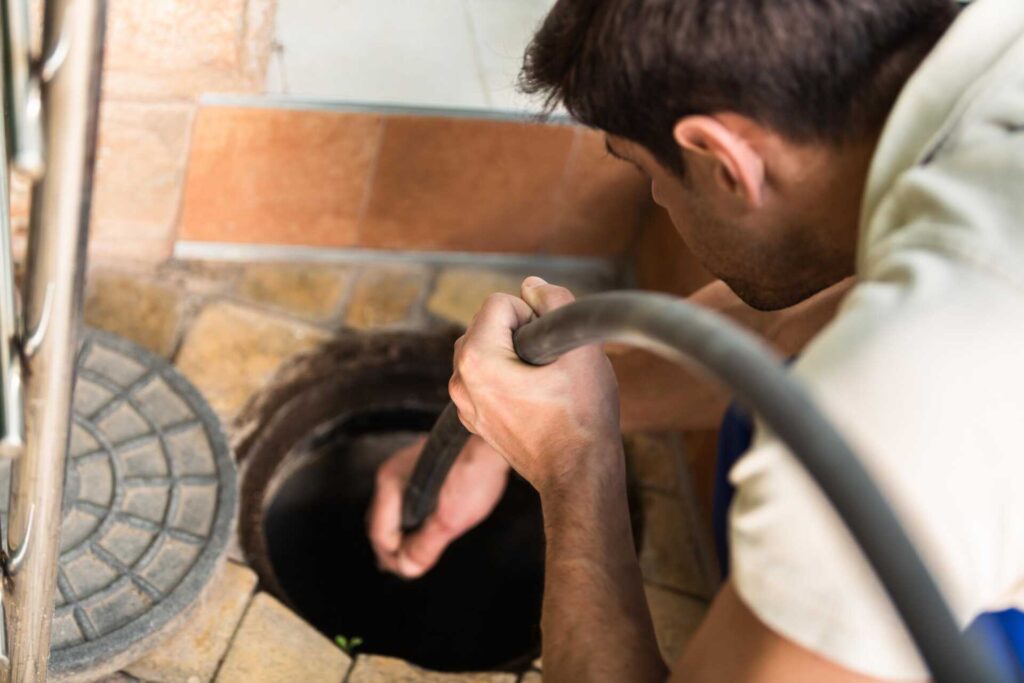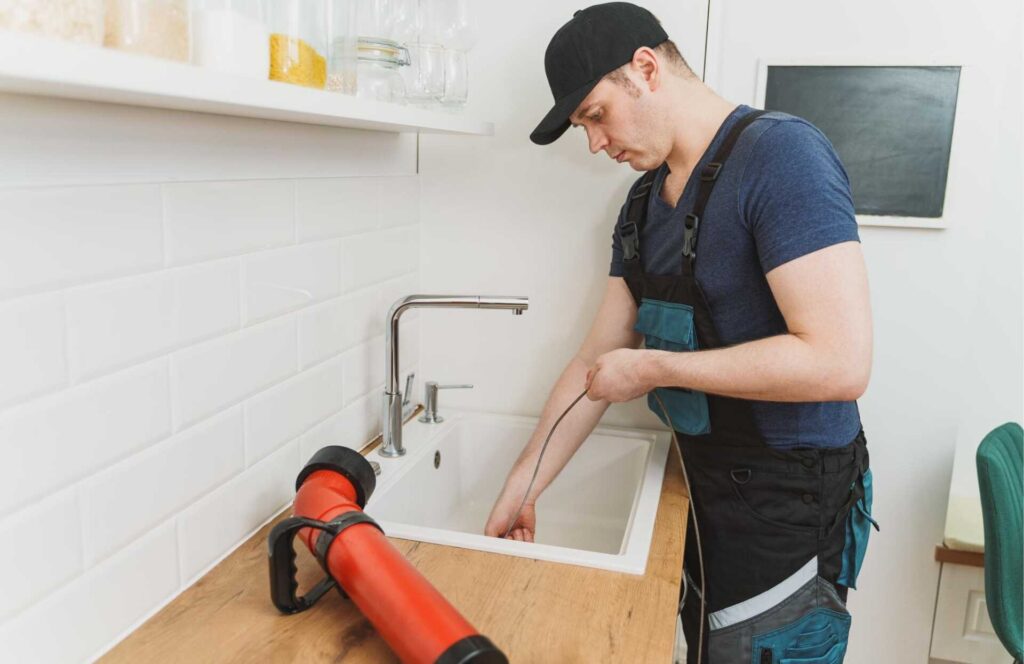
Contents
If you’ve ever faced clogged drains, you know how vital it is to find effective solutions. Hydro jetting stands out as a top method for tackling stubborn clogs, but not all techniques are created equal. Understanding the nuances of hydro jetting can greatly improve your results and prevent future blockages. So, what are the best techniques to master this powerful tool? Let’s explore them together.
Key Takeaways
- Assess the Clog: Identify the type and severity of the blockage to select the appropriate jetting technique.
- Nozzle Selection: Choose specialized nozzles for specific clogs, such as rotary nozzles for roots and flat spray nozzles for lighter debris.
- Pressure Calibration: Adjust water pressure settings based on the condition and material of the pipes to avoid damage.
- Flow Rate Monitoring: Continuously monitor the flow rate to ensure optimal jetting performance and prevent overloading the system.
- Surface Cleaning: Use hydro jetting to effectively clear grease, soap residue, and sediment buildup, restoring optimal flow in the pipes.
Understanding Hydro Jetting
When you encounter stubborn clogs in your plumbing, understanding hydro jetting can be vital for effective drain cleaning. Hydro jetting utilizes high-pressure water streams to clear blockages and restore flow in your pipes. This method’s primary advantage lies in its ability to remove debris, grease, and even tree roots, making it a thorough solution for various plumbing issues. You’ll appreciate how quickly and efficiently hydro jetting can restore your drainage system, often in a single session.
However, it’s important to evaluate the hydro jetting disadvantages as well. While this technique is powerful, it can sometimes be too aggressive for older or fragile pipes. If your plumbing system has pre-existing vulnerabilities, high-pressure water could exacerbate damage, leading to costly repairs. Additionally, hydro jetting requires specialized equipment and trained professionals, which may result in higher upfront costs than traditional drain cleaning methods.
Understanding both sides helps you make an informed decision when faced with plumbing issues. If you’re part of a community that values effective home maintenance, hydro jetting could be a valuable tool in your arsenal. By weighing the hydro jetting advantages against potential disadvantages, you can determine if this method is the right fit for your needs. Ultimately, knowing when to use hydro jetting can empower you as a homeowner, ensuring you keep your plumbing system running smoothly and efficiently.
Equipment Used in Hydro Jetting
Understanding how hydro jetting works is just the beginning; knowing the equipment involved is equally important. The effectiveness of hydro jetting relies heavily on specialized tools designed for this high-pressure cleaning technique. By familiarizing yourself with the essential equipment, you can better appreciate the process and ensure optimal outcomes.
At the heart of hydro jetting is the jetting machinery, which generates the high-pressure water needed to clear stubborn clogs. This machinery is typically powered by a diesel or electric engine, driving water through high-pressure hoses. These hoses are built to withstand extreme pressure and are equipped with specialized nozzles that direct the water flow effectively.
Here’s a breakdown of the essential equipment used in hydro jetting:
| Equipment Type | Description |
|---|---|
| Jetting Machinery | Generates high-pressure water for effective drain cleaning. |
| Durable hoses are designed to handle extreme pressure. | Durable hoses designed to handle extreme pressure. |
| Nozzles | Specialized tips that enhance water flow and cleaning power. |
| Water Tank | Stores water needed for the jetting process. |
| Control Panel | Manages pressure levels and flow rates during operation. |
Each of these components plays an essential role in ensuring the hydro jetting process runs smoothly and effectively. By understanding their functions, you can better appreciate the intricacies of tackling clogged drains. Investing in quality equipment and knowing how to use it properly will make a significant difference in your drain-cleaning efforts.
Preparation for Hydro Jetting
Preparation is essential for effective hydro jetting, as it sets the stage for successful drain cleaning. To maximize the hydro jetting benefits, you need to take specific steps before the actual process begins. Proper preparation ensures that the technique works efficiently and minimizes any potential issues.
Here’s a checklist to guide your preparation:
Assess the Clog: Understand the type and severity of the blockage. This helps determine if hydro jetting is indeed the best drain cleaning technique for your situation.
Clear the Area: Remove any obstructions around the access point. This allows for easier maneuvering of equipment and ensures safety during the process.
Inspect the Drain System: Use a camera inspection to identify any underlying problems, such as damaged pipes or roots. This insight is vital for effective hydro jetting.
Gather Necessary Tools: Confirm you have all required equipment ready, including the hydro jetter, appropriate nozzles, and safety gear. This reduces downtime during the job.
Techniques for Effective Jetting
To ensure effective jetting, it’s essential to understand the various nozzle types and their specific applications. You’ll also need to pay close attention to pressure settings, as they directly impact the cleaning efficiency. Finally, don’t overlook safety precautions to protect yourself and the equipment during the process.
Nozzle Types Overview
When tackling clogged drains, selecting the right nozzle is essential for effective hydro jetting. The choice of nozzle influences the cleaning process, so understanding various nozzle designs and materials can make a significant difference in your results. Here’s a quick overview of the primary types of nozzles you’ll encounter:
- Rotary Nozzles: These feature rotating jets that provide a powerful, 360-degree cleaning action, ideal for heavy debris and root blockages.
- Flat Spray Nozzles: Designed to create a wide fan of water, these are excellent for cleaning surfaces and removing lighter debris.
- Cone Nozzles: With a concentrated jet, cone nozzles are perfect for penetrating tough clogs and breaking down stubborn materials.
- Bulldog Nozzles: Engineered for aggressive cleaning, these nozzles work well in difficult-to-reach areas and are effective against grease and sludge.
Choosing the right nozzle material—like stainless steel or plastic—also plays a role in durability and effectiveness. By understanding these different nozzle designs, you’ll feel more confident in tackling any drain issue that comes your way.
Pressure Settings Importance
Selecting the appropriate nozzle is just the beginning; understanding pressure settings is equally important for effective hydro jetting. The right pressure calibration can make all the difference in clearing stubborn clogs without damaging your pipes. Each situation requires ideal settings tailored to the specific type of blockage and pipe condition.
Using too high a pressure can risk damaging older or fragile plumbing systems, while too low a pressure may fail to dislodge debris effectively. For most residential applications, adjusting your pressure between 2,000 to 4,000 PSI is preferable, but always consider the pipe material and the nature of the blockage.
As you calibrate the pressure, monitor the flow rate and make sure your equipment can handle the adjustments. A skilled technician knows that different nozzles can operate best at varied pressures, which can enhance the overall efficiency of the jetting process.
Safety Precautions Required
While understanding hydro jetting techniques is essential for effective drain cleaning, adhering to necessary safety precautions is equally important. Hydro jetting safety isn’t just about the equipment; it also involves how you prepare for the job. Conducting a thorough risk assessment is critical before you begin.
Here are some key safety precautions to keep in mind:
- Wear Protective Gear: Always wear your gloves, goggles, and face shield to protect against debris and high-pressure water.
- Check Equipment: Inspect hoses, nozzles, and the jetting machine for any wear or damage before use. Equipment failure can lead to serious injuries.
- Clear the Work Area: Make sure the workspace is free of obstacles and hazards to prevent slips and falls during the operation.
- Understand the System: Familiarize yourself with the plumbing layout. Knowing where the pipes lead can prevent unexpected blockages or issues.
Safety Precautions to Consider
When performing hydro jetting, you must prioritize safety by using appropriate personal protective equipment. Familiarize yourself with the equipment operating guidelines to ensure efficient and safe operation. Additionally, establish emergency response procedures to handle any unforeseen incidents effectively.
Personal Protective Equipment
Before engaging in hydro jetting, you must prioritize your safety by wearing appropriate personal protective equipment (PPE). Ensuring your well-being fosters a sense of belonging and enhances your effectiveness during the process. Here are four essential items of protective gear you should wear:
- Safety Goggles: Protect your eyes from debris and high-pressure water jets.
- Gloves: Use heavy-duty gloves to shield your hands, ensuring both personal hygiene and protection from harmful substances.
- Steel-Toed Boots: Sturdy footwear will guard your feet against falling objects, providing stability and safety.
- Protective Clothing: Wear long sleeves and pants made from durable fabric to minimize skin exposure to chemicals and sharp debris.
Equipment Operating Guidelines
Operating hydro jetting equipment requires strict adherence to safety precautions to prevent accidents and ensure efficient operation. Before you begin, check your equipment thoroughly. Confirm all components are in good condition, as regular equipment maintenance is essential for peak performance. Inspect hoses, nozzles, and pressure gauges for any signs of wear or damage.
When setting up, secure your work area to avoid unauthorized access. Always wear appropriate personal protective equipment (PPE), including gloves, goggles, and hearing protection. Make sure to follow manufacturer guidelines for pressure settings to avoid mishaps during operation.
While jetting, stay alert for potential hazards and be prepared for jetting troubleshooting. If you notice any irregularities, such as unusual sounds or pressure drops, stop the operation immediately to assess the situation. Never attempt to fix equipment while it’s in operation; always disconnect the power first.
After use, clean your equipment thoroughly and inspect it again to identify any issues that may require attention. Adhering to these operating guidelines enhances safety and fosters a sense of community among professionals committed to effective hydro jetting practices.
Emergency Response Procedures
In the event of an emergency during hydro jetting operations, swift and decisive action is essential to secure safety and minimize damage. Understanding and implementing emergency protocols can make all the difference in a critical situation. Here’s a quick guide to ensure a rapid response:
- Shut Off Equipment: Immediately turn off the hydro jetting machine to prevent further complications.
- Assess the Situation: Quickly evaluate the environment for any hazards, such as water leaks or electrical risks.
- Alert Team Members: Communicate with your team about the emergency to coordinate an effective response.
- Call for Help: If the situation is beyond your control, don’t hesitate to contact emergency services or a professional plumber.
Common Drain Problems Addressed
Clogged drains can create significant disruptions in daily life, leading to unpleasant odors and slow drainage. These issues often stem from drain blockages caused by a buildup of grease, hair, soap residue, or foreign objects. When left unaddressed, these blockages can escalate, resulting in more severe plumbing issues that disrupt your home’s functionality.
Another common drain problem you might encounter is pipe deterioration. Over time, older pipes, especially those made of materials like cast iron or clay, can corrode or crack, leading to leaks or further blockages. This deterioration affects water flow and poses a risk of structural damage to your property if not repaired promptly.
You may also face root intrusion, where tree roots invade your drainage system in search of moisture. This can lead to significant blockages and damage, requiring immediate action to prevent further complications. Additionally, sediment buildup can occur in pipes, particularly in hard water areas, leading to reduced pipe diameter and restricted flow.
Hydro jetting is an effective technique to tackle these common problems. It utilizes high-pressure water streams to clear drain blockages and remove buildup, restoring proper flow and helping to prevent future issues. By addressing these drain problems with hydro jetting, you can maintain the integrity of your plumbing system and ensure a smooth, hassle-free drainage experience.
Post-Jetting Maintenance Tips
Once hydro jetting has cleared your drains, maintaining that newfound clarity is essential for long-term effectiveness. You want to make sure your drainage system stays clear and operates efficiently. Here are some post-jetting maintenance tips to help you achieve just that:
Conduct a Post Jetting Inspection: Regularly check your drains for any signs of buildup or blockage. This proactive approach will help you catch issues before they escalate.
Avoid Grease and Oil: Never pour grease or oil down your drains. These substances can harden and create blockages, negating the benefits of hydro jetting.
Flush with Hot Water: Once a week, run hot water through your drains to help dissolve any lingering debris. This simple step keeps your pipes free-flowing and clear.
Schedule Routine Drainage Maintenance: Make it a point to schedule professional inspections and maintenance every 1-2 years. This makes sure that any potential issues are addressed early, prolonging the life of your plumbing.
Final Thoughts
Hydro jetting can transform clogged drains from a frustrating hassle into a smoothly flowing system. By combining the right techniques and proper preparation, you can tackle the most stubborn blockages with ease. While the immediate results can be impressive, neglecting post-jetting maintenance can lead to future issues. Therefore, balancing effective jetting with ongoing care ensures your drains remain clear and functional, preventing the recurrence of problems that once disrupted your peace of mind.
